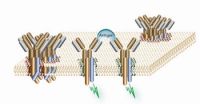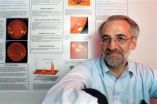(Press-News.org) The Sun's activity has recently affected the Earth's atmosphere and climate in unexpected ways, according to a new study published today in the journal Nature. The study, by researchers from Imperial College London and the University of Colorado, shows that a decline in the Sun's activity does not always mean that the Earth becomes cooler.
It is well established that the Sun's activity waxes and wanes over an 11-year cycle and that as its activity wanes, the overall amount of radiation reaching the Earth decreases. Today's study looked at the Sun's activity over the period 2004-2007, when it was in a declining part of its 11-year activity cycle.
Although the Sun's activity declined over this period, the new research shows that it may have actually caused the Earth to become warmer. Contrary to expectations, the amount of energy reaching the Earth at visible wavelengths increased rather than decreased as the Sun's activity declined, causing this warming effect.
Following this surprising finding, the researchers behind the study believe it is possible that the inverse is also true and that in periods when the Sun's activity increases, it tends to cool, rather than warm, the Earth. This is based on what is already known about the relationship between the Sun's activity and its total energy output.
Overall solar activity has been increasing over the past century, so the researchers believe it is possible that during this period, the Sun has been contributing a small cooling effect, rather than a small warming effect as had previously been thought.
Professor Joanna Haigh, the lead author of the study who is Head of the Department of Physics and member of the Grantham Institute for Climate Change at Imperial College London, said: "These results are challenging what we thought we knew about the Sun's effect on our climate. However, they only show us a snapshot of the Sun's activity and its behaviour over the three years of our study could be an anomaly.
"We cannot jump to any conclusions based on what we have found during this comparatively short period and we need to carry out further studies to explore the Sun's activity, and the patterns that we have uncovered, on longer timescales. However, if further studies find the same pattern over a longer period of time, this could suggest that we may have overestimated the Sun's role in warming the planet, rather than underestimating it."
Professor Sir Brian Hoskins, the Director of the Grantham Institute for Climate Change at Imperial College London, added: "We know that the Earth's climate is affected both by human activity and by natural forces and today's study improves our understanding of how the Sun influences our climate. Studies like this are vital for helping us to create a clear picture of how our climate is changing and through this, to work out how we can best protect our planet."
The researchers used satellite data and computer modelling to analyse how the spectrum of radiation and the amount of energy from the Sun has been changing since 2004. Instruments on the SORCE satellite have been measuring the Sun's energy output at many different wavelengths. The researchers fed the data from SORCE into an existing computer model of the Earth's atmosphere and compared their results with the results obtained using earlier, less comprehensive, data on the solar spectrum.
###
For further information please contact:
Laura Gallagher
Research Media Relations Manager
Imperial College London
email: l.gallagher@imperial.ac.uk
Tel: +44(0)20 7594 8432
Out of hours duty press officer: +44(0)7803 886 248
Notes to editors:
1. "An influence of solar spectral variations on radiative forcing of climate" Nature, 7 October 2010
Corresponding author: J.D. Haigh, Imperial College London.
For full list of authors please see paper.
Download a copy of the study using this link: https://fileexchange.imperial.ac.uk/files/ed69e40f87b/SIMpaper_5.pdf
2. The SORCE satellite (Solar Radiation and Climate Experiment) is a NASA-sponsored satellite that is measuring incoming x-ray, ultraviolet, visible, near-infrared, and total solar radiation. The measurements from SORCE's instruments will help us address long-term climate change, natural climate variability, enhanced climate prediction, atmospheric ozone and UV-B radiation.
Stratosphere/mesosphere. The stratosphere is a layer in the atmosphere that begins about 6-8km above the Earth's surface and extends to an altitude of 50km. The mesosphere lies above the stratosphere and extends to an altitude of 95-120km.
3. The University of Colorado was founded in 1876 in Boulder and is nested in the foothills of the Rocky Mountains. CU-Boulder is a national public research institution with an enrollment of more than 30,000 students, both undergraduates and graduates. The student population comes from all 50 American states and from more than 100 foreign countries.
4. About Imperial College London
Consistently rated amongst the world's best universities, Imperial College London is a science-based institution with a reputation for excellence in teaching and research that attracts 14,000 students and 6,000 staff of the highest international quality. Innovative research at the College explores the interface between science, medicine, engineering and business, delivering practical solutions that improve quality of life and the environment - underpinned by a dynamic enterprise culture.
Since its foundation in 1907, Imperial's contributions to society have included the discovery of penicillin, the development of holography and the foundations of fibre optics. This commitment to the application of research for the benefit of all continues today, with current focuses including interdisciplinary collaborations to improve global health, tackle climate change, develop sustainable sources of energy and address security challenges.
In 2007, Imperial College London and Imperial College Healthcare NHS Trust formed the UK's first Academic Health Science Centre. This unique partnership aims to improve the quality of life of patients and populations by taking new discoveries and translating them into new therapies as quickly as possible.
Website: www.imperial.ac.uk
Air pollution has already been linked to a range of health problems. Now, a ground-breaking new study suggests pollution from traffic may put women at risk for another deadly disease. The study, published in the prestigious journal Environmental Health Perspectives, by researchers from The Research Institute of the MUHC (RI MUHC; Dr. Mark Goldberg), McGill University (Drs. Goldberg, Dan Crouse and Nancy Ross), and Université de Montréal (Dr. France Labrèche), links the risk of breast cancer – the second leading cause of death from cancer in women – to traffic-related air ...
VTT printed the paper with antibodies that react to the sample. The test result can be read in the form of a line, for example, which either does or does not appear depending on the sample – just like in the pregnancy tests already familiar to consumers. It is also possible to print instructional images or text, for example, either on or alongside the test.
Printed paper test can be used to test quickly and easily for the presence of a given substance. The test can be adapted to different purposes by exchanging the identifying antibody printed on the paper for another, ...
CHAPEL HILL – A clinical trial designed to replace the genetic defect causing the most common form of muscular dystrophy has uncovered an unexpected aspect of the disease. The trial, based on therapy designed by scientists at the University of North Carolina at Chapel Hill School of Medicine, showed that some patients mount an immune response to the dystrophin protein even before they have received the gene therapy.
The puzzling results, which came from trials at Columbus Children's Hospital in Ohio, suggest that the immune systems of a number of patients -- once thought ...
Insecure Web browsers and the growing number of complex applets and browser plug-in applications are allowing malicious software to spread faster than ever on the Internet. Some websites are installing malicious code, such as spyware, on computers without the user's knowledge or consent.
These so-called "drive-by downloads" signal a shift away from using spam and malicious e-mail attachments to infect computers. Approximately 560,000 websites -- and 5.5 million Web pages on those sites -- were infected with malware during the fourth quarter of 2009.
A new tool that ...
It's an experience shared by everyone: You run into someone you know, but his or her name escapes you.
Now, Temple psychologist Ingrid Olson has found a way to improve the recall of proper names.
Olson dedicates her research to understanding human memory. In a recent study, she found that electric stimulation of the right anterior temporal lobe of the brain improved the recall of proper names in young adults by 11 percent. Her study appears this month in the journal Neuropsychologia.
"We know a lot about how to make people's memory worse, but we don't know very ...
Fish byproducts may be a new source of fish feed, thanks to research by U.S. Department of Agriculture (USDA)-funded scientists in Hawaii.
Research scientist Dong-Fang Deng and her colleagues with the Oceanic Institute in Waimanalo, Hawaii, are collaborating with USDA food technologist Peter Bechtel to develop the new fish feeds. Bechtel is with the USDA Agricultural Research Service (ARS) Subarctic Agricultural Research Unit in Kodiak, Alaska. ARS is the USDA's principal intramural scientific research agency.
The scientists are taking fish parts that would normally ...
In order to track down pathogens and render them harmless, the immune system must be able to recognize myriad different foreign substances and react to them. Scientists at the Max Planck Institute of Immunobiology and the Centre for Biological Signalling Studies BIOSS at the University of Freiburg have discovered how the immune system's B-cells can be activated by numerous substances from our environment. The receptor molecules on the surface of the B-cells are only activated when the receptor subunits separate following the binding of foreign substances. These findings ...
A $5 million National Science Foundation (NSF) grant to upgrade and expand a set of radio frequency antennas at Owens Valley Solar Array (OVSA) http://www.ovsa.njit.edu/ has been awarded to NJIT. The new facility is expected to help scientists better understand the nature of solar flares which greatly interest government, industry and the military.
"Space weather incidents such as coronal mass ejections and solar flares can cause problems with cell phone reception, GPS systems, power grids and other technologies," said NJIT Distinguished Professor Dale Gary, a world-renowned ...
Chevy Chase, MD— A new consensus statement published in the September, 2010, issue of The Endocrine Society's Journal of Clinical Endocrinology & Metabolism (JCEM) finds that the increasing recognition that beta-cell failure occurs much earlier and severely than commonly believed suggests that regular glycemia screening, early identification of patients at metabolic risk and prompt and aggressive intervention deserves greater emphasis.
The consensus statement is based on the findings of a working group of basic researchers, clinical endocrinologists and primary care ...
BETHESDA, Md., Oct. 6, 2010 – Massachusetts General Hospital researchers say they have determined how iron contributes to the production of brain-destroying plaques found in Alzheimer's patients.
The team, whose study results appear in this week's Journal of Biological Chemistry, report that there is a very close link between elevated levels of iron in the brain and the enhanced production of the amyloid precursor protein, which in Alzheimer's disease breaks down into a peptide that makes up the destructive plaques.
Dr. Jack T. Rogers, the head of the hospital's neurochemistry ...



